Halfway through a rain filled day in NYC we received a call from a local Brooklyn homeowner who stated that they are receiving backwater from the excessive amounts of rain. They were interested in installing a check valve to avoid future backups due to rain.
There are a few standard questions we always ask before discussing the need for a check valve.
- Are you only experiencing backups when it rains or are you experiencing backups sporadically throughout the year? If the owner is experiencing backups outside of rain we start the rule out the need for a check valve as it will only serve as a temporary fix.
- Are your roof liter lines connected through the piping inside of your house? Are your liter lines feeding through the main house sewer trap out to the street? If you have answered yes to either of these questions a check valve will not function. In this case water will flow from the inside of the house and back from the city sewer not allowing the check valve to function.
We now suggest a camera inspection of the sewer line to see what exactly is causing the sewage backup. In this case the Brooklyn homeowner was suffering from backups due to a broken pipe. The backups were exacerbated due to the additional rain water flow and now needed to be repaired on an emergency basis.
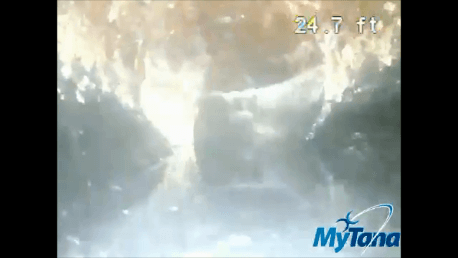
Separation inside pipe |
We now had to obtain an emergency DOT permit to excavate in the roadway and repair the broken section of sewer pipe. First we started by jack hammering the roadway.
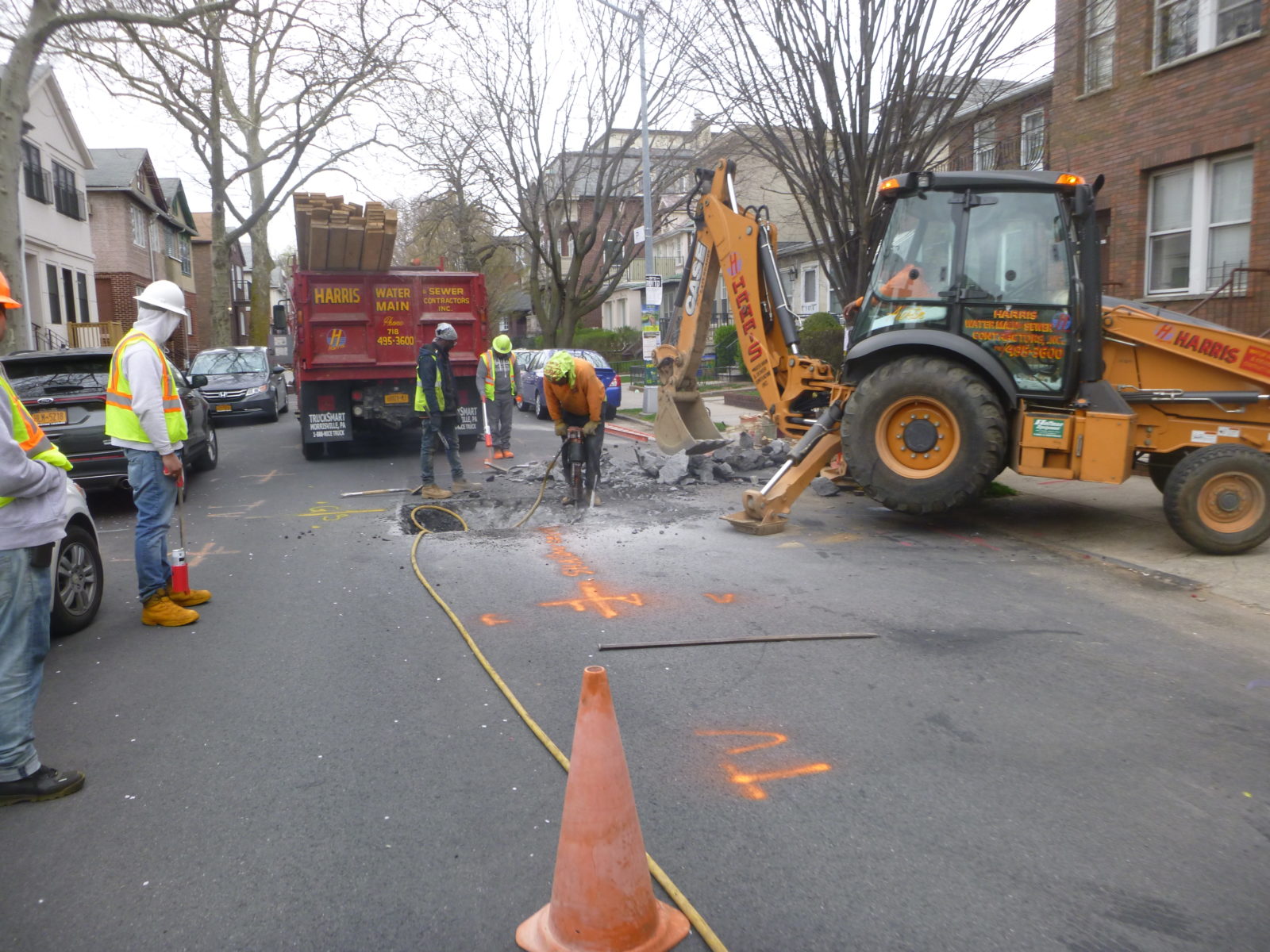 |
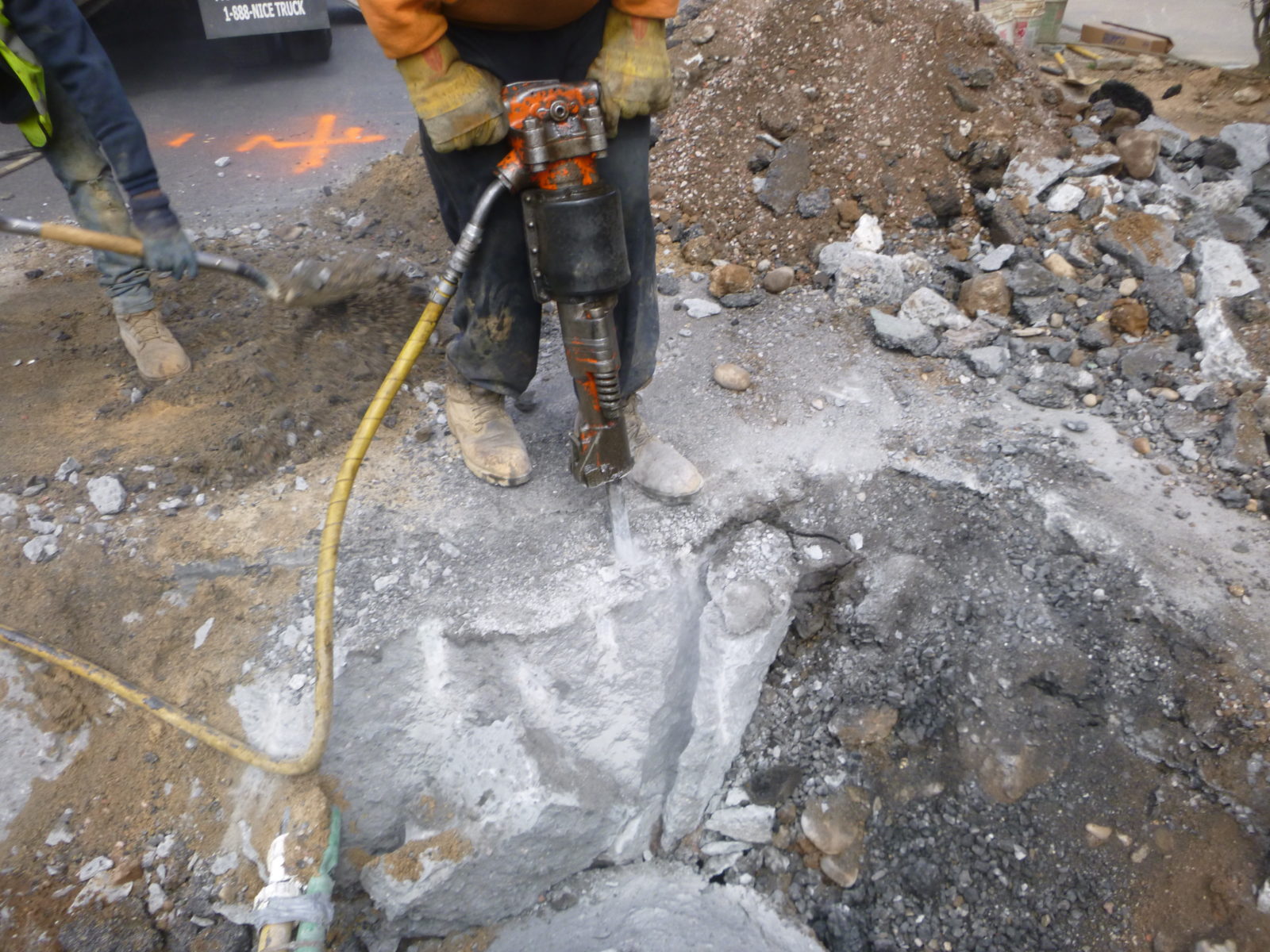 |
Finally after 4 hours of digging, we reached the existing sewer line which was 10’ deep.
Red line indicates underground tunnel
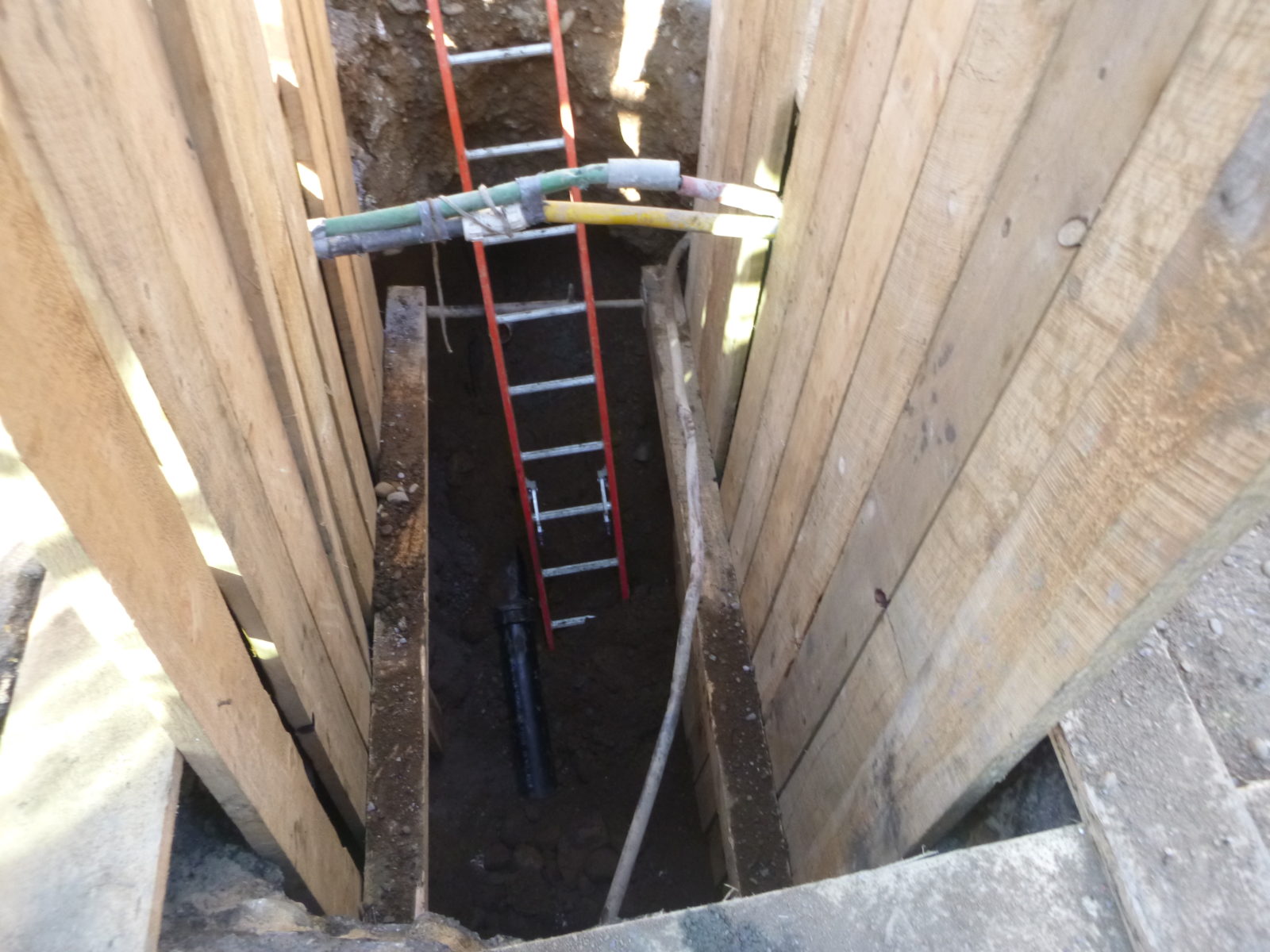
|
The area was now cleared for pipe repair which was completed and inspected by the NYC DEP.
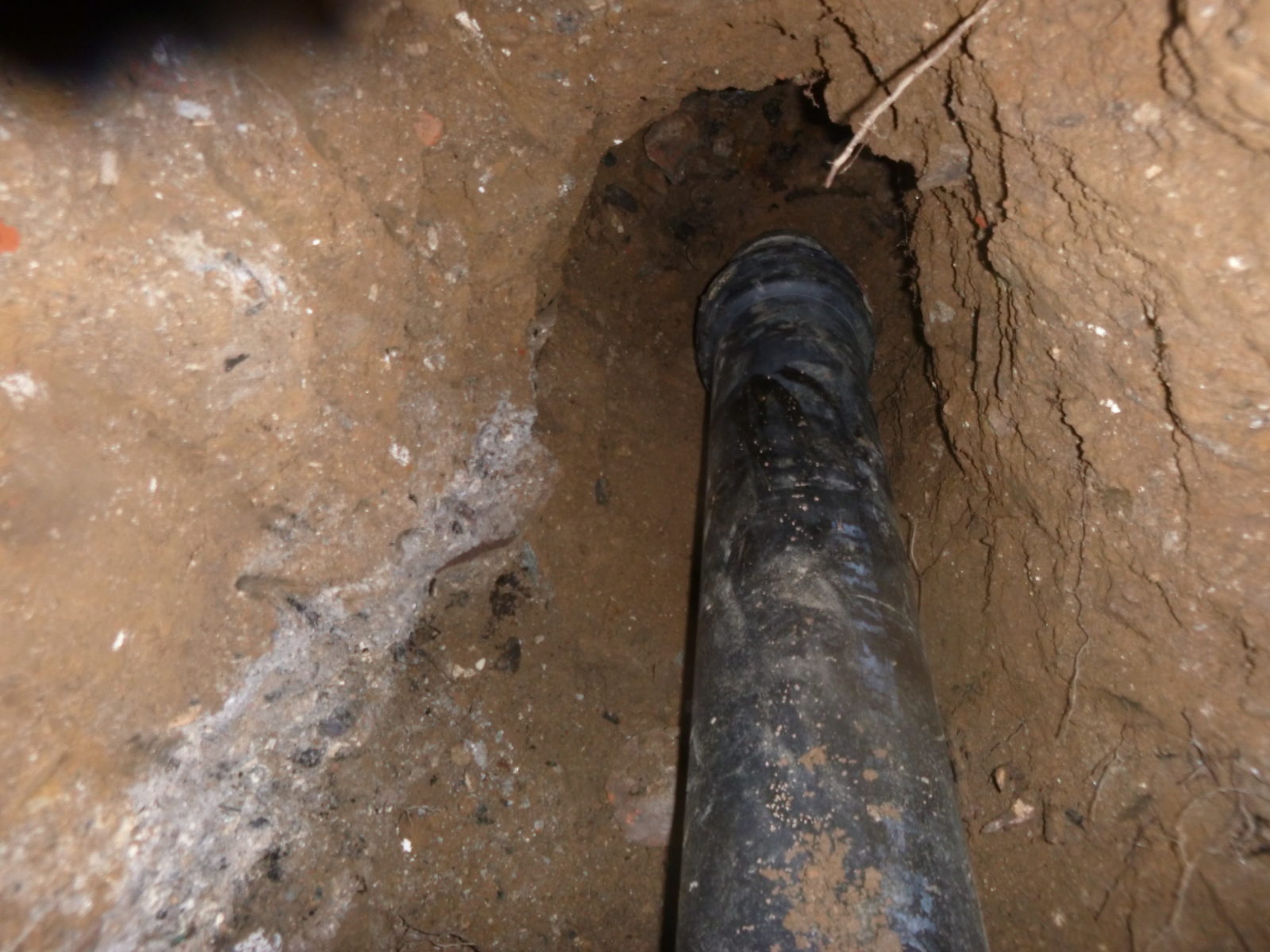
Sewer pipe is repaired with 6″ cast iron |
The roadway was restored per DOT regulations the very next day
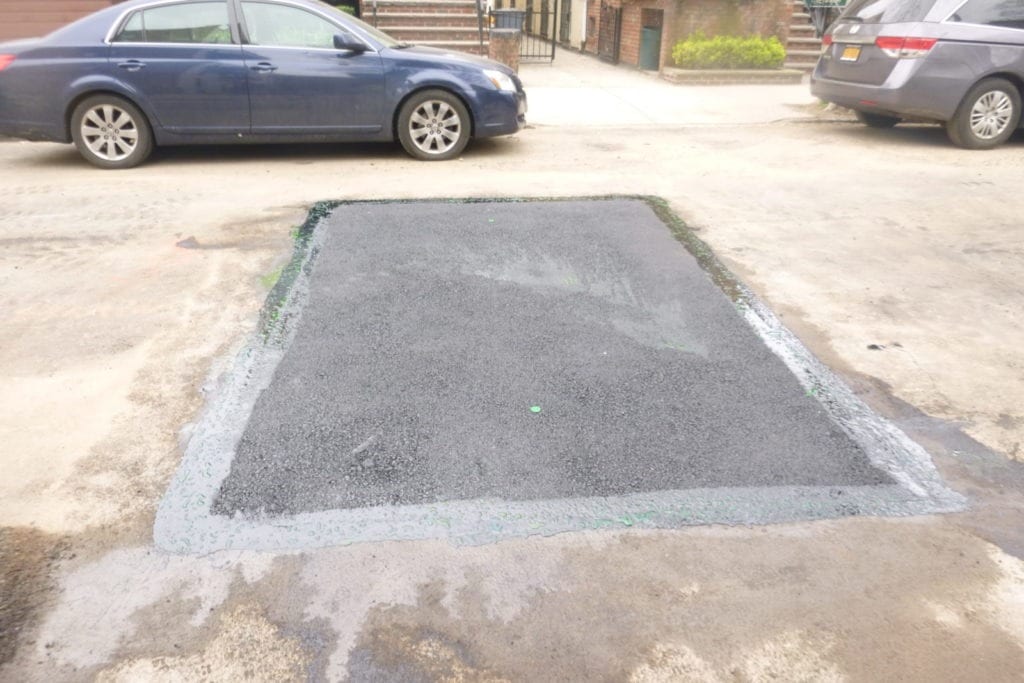
|




















